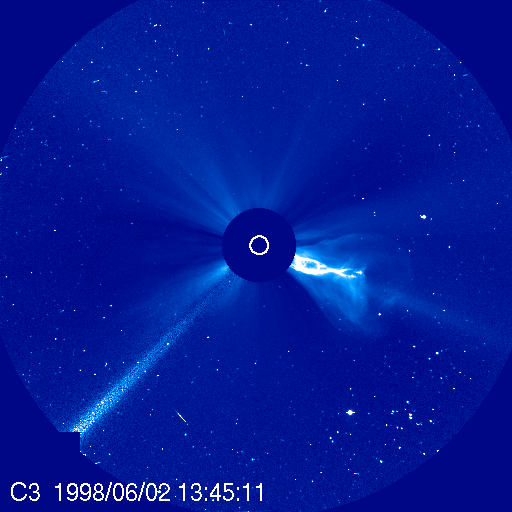|
Solar Flares & CME's
So, what is exactly is a Solar Flare?
A
solar flare is defined as a sudden,
intense and explosive change in the electromagnetic energy levels of the plasmas in the upper
solar atmosphere. In other words, a solar flare is an intense electrical
discharge through the plasmas of the upper solar atmosphere. These streams
of flowing electrons, and these flowing Birkeland currents of charged plasma
particles, create powerful magnetic fields within the plasmas in the upper solar
atmosphere. The rapid change in the energy level within the plasma of the
upper solar atmosphere results in intensely bright energy emissions across
virtually the entire electromagnetic spectrum, much like they occur during
lightening strikes in the Earth’s atmosphere. These high energy electrical
discharge emissions include x-rays and gamma radiation at the high end, yet
these powerful bursts of emissions can also be observed in radio waves and even
further into the low end of the energy spectrum. We have observed
and recorded gamma and x-ray emissions from electrical discharges here on Earth
using the same Rhessi satellite which has observed gamma ray emissions from
electrical discharges in the solar atmosphere.
A solar flare typically occurs when sufficient electromagnetic
energy (charge variation) has built up between the sun’s outer solar sheath and
the sun’s upper solar atmosphere. The electromagnetic energy is suddenly
released as an electrical discharge through the plasmas of the solar system.
Since the sun is the largest mass body in the solar system, these discharges
become concentrated in the upper solar atmosphere. The amount of energy
that is released during a solar flare can exceed the equivalent of millions of
100-megaton hydrogen bombs.
One of the first modern mentions of a solar flare came on
September 1, 1859 when two scientists, Richard C. Carrington and Richard
Hodgson, were independently observing sunspots. They both reported viewing
a large flare in white light that day. The electromagnetic storm that ensued
caused significant damage to telegraphs operating across the US and
Europe.
The largest solar flare ever recorded on video is called a “Granddaddy”
(x-class) solar flare that was recorded in 1945.
As the electromagnetic energy is released through the solar
atmosphere, particles, including electrons, protons, neutrons and heavy nuclei,
are “z-pinched” from the plasma, heated and accelerated towards to solar sheath.
The energy released during a typical flare is on the order of 1027
watts. Large flares can emit up to 1032 watts of energy. This
energy is ten million times greater than the energy released from a volcanic
explosion. As impressive as that might sound, it is less than one-tenth of the
total energy emitted by the Sun every second.
| 